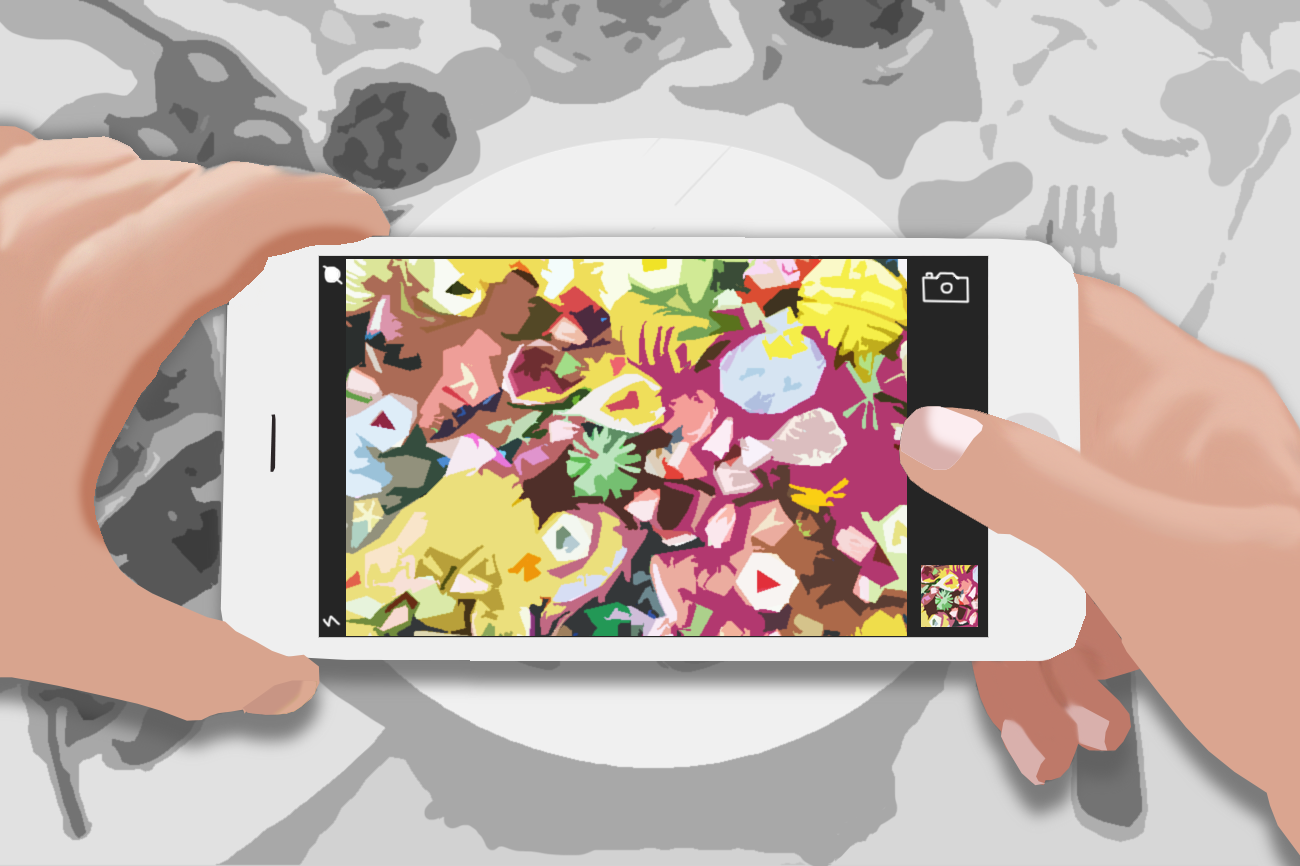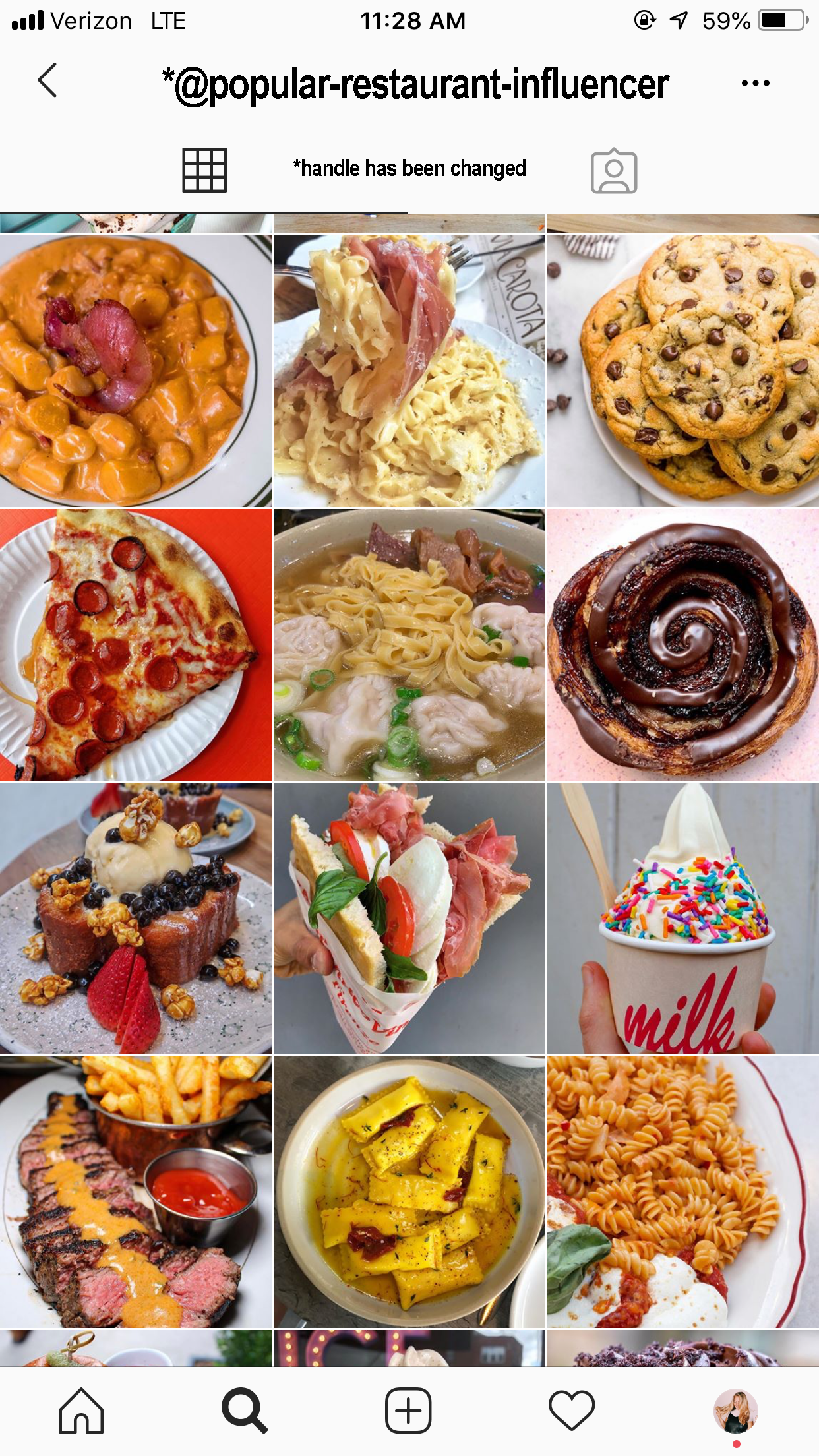Why Instagram Is Ruining Restaurants For Me
Phone eats first
Just a few years ago, choosing a restaurant was easy. You’d either agree with your dining-mate on a reliable, well-known spot, venture into a critic-verified dining experience, or take a risk with a joint that just opened down the block. Maybe you’d reference Yelp, and maybe you’d have the best meal of your human existence. Or maybe you’d be led astray, but it was okay. You’d accept it and move on.

In order to gain notoriety, restaurant chefs needed only to prepare delicious food. Until 2012, when Facebook acquired Instagram, growing the photo-sharing app’s user base exponentially. Now supporting over one billion users, Instagram is the social medium of choice for inspirational lifestyles, dog profiles; and, of course; food photography.
Soon, restaurants incorporating Instagram into their marketing strategies blossomed into a full-blown business. According to small-business financial adviser Fundera, 69 percent of millennial diners like to snap a pic of their food before eating it, and 30 percent of them avoid restaurants with a poor Instagram presence.
Considering pressure like that, it’s no wonder restaurants may test trading taste for aesthetics. With the right look, a novelty dish can go viral. And that’s how we get tricked into eating foul food. Other tactics include zhushing up dining rooms with decorative backdrops, sharing full menus online (59 percent of millennials say they check beforehand), and distributing Instagram photography kits to patrons.
Doing it for the ‘gram

Instagram stifles finding hole-in-the-wall gems, or having a go-to “spot.” Rather, users are encouraged to go out to eat where other users are going out to eat, or at least where their posts and stories suggest they’re eating (several popular food accounts simply crowd-source images.) Those places often require reservations a week in advance — social media circles tend to haunt the same rotation of restaurants. When traveling, users tend to adhere to the list of suggestions cataloged by the folks who posted photographs from their previous visits to the same locale. I’ve seen the same Italian panini pic posted so many times I’ve lost interest in trying it myself if I ever make it to Florence.
And that’s without considering how Influencers play into this mess. Restaurants, like any other business, exchange free or discounted products (in this case meals and drinks) for publicity. There are even PR companies, like New York City-based The Door, dedicated to pairing restaurants with suitable influencers.
“What table are you going to put them at so that they get the best lighting? What are our most photo-worthy dishes on that menu?” Jetty-Jane Connor, the former associate vice-president of marketing, branding and public relations at The Door, told Bon Appetit in 2016.
Sign up to get the BEST of Tom's Guide direct to your inbox.
Get instant access to breaking news, the hottest reviews, great deals and helpful tips.
It’s then that influencer’s job to make you, the passive scroller, want what they’re having. But it comes with both financial and quality costs. In an article about the misuse of influencer marketing, Entrepreneur.com warns restaurants of influencers who try “to arm-twist [you] into giving them a discount or even make their visit completely free.” Sure, if you cough up a bone the influencer will speak positively of the food they photographed, but they’re paid promoters, not seasoned critics. They won’t offer useful feedback for menu improvement newer restaurants usually need.
When I went to a new, upscale sports bar in Manhattan last month excited to try the buffalo cauliflower an Instagram foodie/friend-of-mine shared to her account, the dish I received did not look like the shiny, saucy, sexily-charred cauli-bites dripping out of a hot skillet I expected. They were bland, cold and extremely un-sexy. I obviously still ate them (they were NYC-priced, after all) but as rapper Ja Rule once put it, I felt “hustled, scammed, bamboozled, hoodwinked, lead astray!!!"
While it wasn’t Fyre-festival level deception, it bothered me as much as a 70% apathetic person could possibly be offended by “phone eats first” ploys. Before you say, “it’s just food,” I’ll tell you no, it’s not. Certain dishes can stimulate pleasure centers, develop memory associations, and correlate to social connections. When it comes to dining out specifically, there’s the cherished rituals involved: gathering with comrades, exploring cuisines, going splitsies on entrees, a dessert with multiple spoons, and, dare I say, putting your phones away.
Food—not photos—first
My late grandfather Maurice, a west coast restaurant critic, would absolutely lose it if he saw how my generation treats restaurants these days. No one appreciated restaurants quite like him - he dined out exactly 14 times a week the entire time I knew him. He also hosted a food radio show in Palm Springs where listeners had to tune in for his two-cents on top spots.
I inherited his affection for meals out, so no, I’m not going to give up restaurants because of an app. As much as I work on honing my culinary skills (some of Papa’s recipes included), I live in a city with some of the best chefs in the world, and yes, I discover some of them via Instagram. But there are restaurateurs out there that should work more on selling foodies like me with, well, their food. Not their posts.
Kate Kozuch is the managing editor of social and video at Tom’s Guide. She writes about smartwatches, TVs, audio devices, and some cooking appliances, too. Kate appears on Fox News to talk tech trends and runs the Tom's Guide TikTok account, which you should be following if you don't already. When she’s not filming tech videos, you can find her taking up a new sport, mastering the NYT Crossword or channeling her inner celebrity chef.

